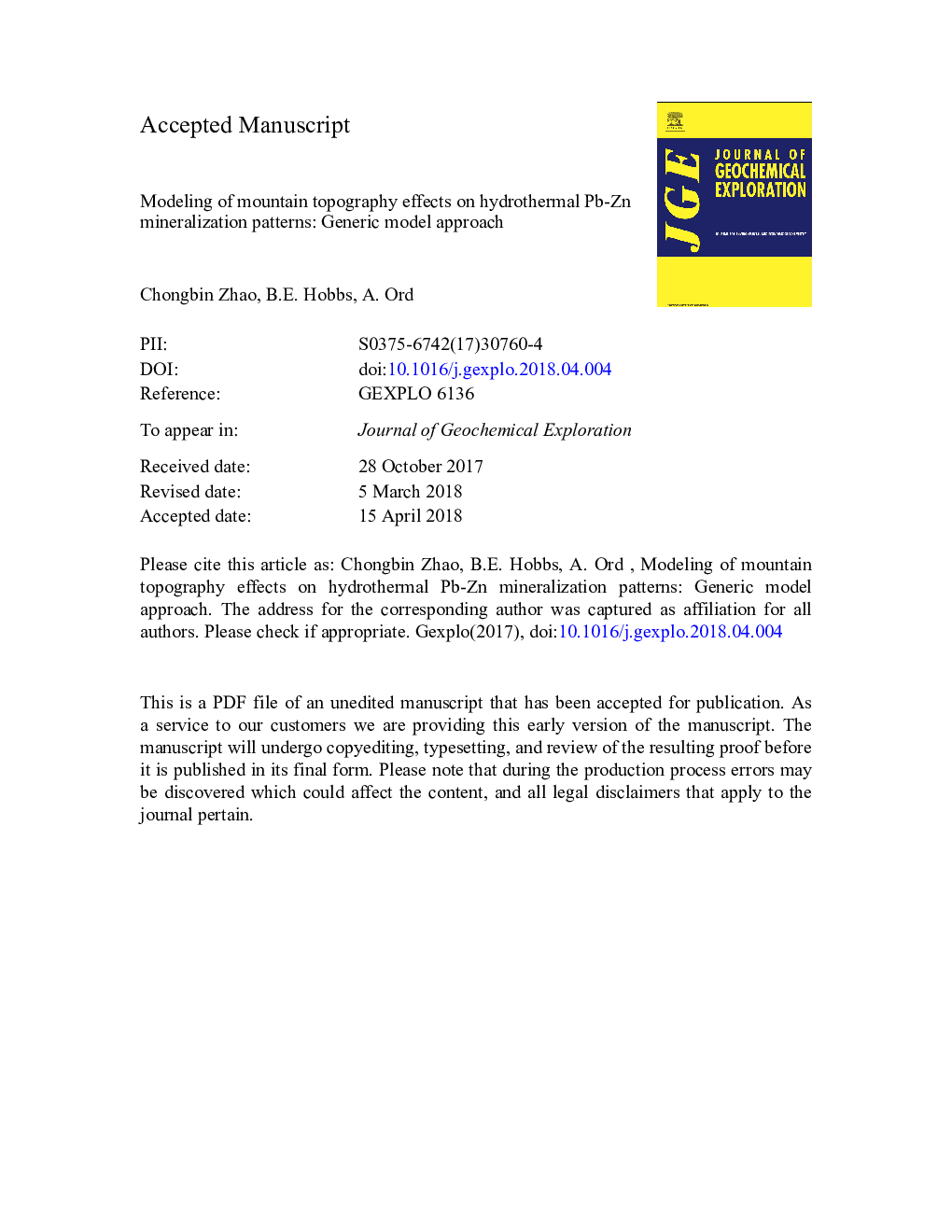| Article ID | Journal | Published Year | Pages | File Type |
|---|---|---|---|---|
| 8865946 | Journal of Geochemical Exploration | 2018 | 34 Pages |
Abstract
Mountain topography can cause both pressure-gradient driven advective flow and temperature-gradient driven convective flow. Compared with the pressure-gradient driven advective flow, the temperature-gradient driven convective flow can last long enough to enable the hydrothermal ore-forming system to reach a steady state. This paper is focused on the numerical modeling of a hydrothermal ore-forming system, in which the temperature-gradient driven convective flow is the main driving force of orebody formation and mineralization. A generic model, which can be viewed as a generalized geological model, is used in the numerical modeling. To simulate the chemical aspects of the hydrothermal ore forming system, a simplified chemical process associated with the Broken Hill type Pb-Zn deposit is considered in this study. The related numerical results demonstrated that: (1) The mountain topography plays an important role in controlling Pb and Zn mineralization distribution patterns in a hydrothermal ore-forming system; (2) The mixing of the reactive sulfide and sulfate fluids can be enhanced by the temperature-gradient driven convective flow; (3) If the duration of mineralization time is known, then the computed mineral precipitation rate can be used to predict the average (weight) grade of a mineral in the hydrothermal ore-forming system. Similarly, if the average (weight) grade of a mineral is known from a mining site, then the computed mineral precipitation rate can be used to estimate the duration of mineralization time in the hydrothermal ore-forming system.
Related Topics
Physical Sciences and Engineering
Earth and Planetary Sciences
Economic Geology
Authors
Chongbin Zhao, B.E. Hobbs, A. Ord,
